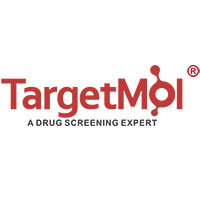| Name | Terbinafine hydrochloride |
| Description | Terbinafine hydrochloride (KWD 2019) is a synthetic allylamine derivative structurally related to naftifine. Terbinafine is active against dermatophytes. |
| In vitro | Terbinafine (50 μM to 100 μM) inhibits only marginally the metabolism of ethoxycoumarin (CYP1A2), tolbutamide (CYP2C9), or ethynylestradiol, CsA, and cortisol. Terbinafine proves to be a potent inhibitor of the CYP2D6-mediated dextromethorphan O-demethylation and bufuralol 1-hydroxylation with IC50values of 0.2 μM and 0.25 μM, respectively. [1] Terbinafine is highly activ Aspergillus isolates (minimum inhibitory concentration [MIC] 0.01 to 2 mg/mL) with a primary fungicidal action (minimum fungicidal concentration [MFC] 0.02 to 4 mg/mL). [2] Terbinafine inhibits dextromethorphan O-demethylation with an apparent Ki ranging from 28 to 44 nM in human hepatic microsomes and averaging 22.4 nM for the heterologously expressed enzymes. [3] Terbinafine shows a very strong activity in vitro against Penicillium spp., Paecilomyces spp., Trichoderma spp., Acremonium spp. and Arthrographis spp. with GMs <1 mg/L. [4] Terbinafine decreases the levels of phosphorylated extracellular signal-regulated kinase (ERK). Terbinafine might cause a decrease of MEK, which in turn up-regulates p53 through the inhibition of ERK phosphorylation, and finally causes an increase of p21expression and cell-cycle arrest. [5] |
| In vivo | Terbinafine demonstrates efficacy both as a topical application and through oral administration in experimental dermatophytoses. Notably, in guinea pigs infected with fungi, a significant decrease in skin temperature is observed after the fourth terbinafine treatment[6]. |
| Storage | Powder: -20°C for 3 years | In solvent: -80°C for 1 year | Shipping with blue ice/Shipping at ambient temperature. |
| Solubility Information | DMSO : 60 mg/mL (182.99 mM), Sonication is recommended.
10% DMSO+40% PEG300+5% Tween 80+45% Saline : 2 mg/mL (6.1 mM), Sonication is recommended.
|
| Keywords | Terbinafine hydrochloride | Terbinafine Hydrochloride | Terbinafine | TDT-067 Hydrochloride | TDT067 Hydrochloride | TDT-067 | TDT067 | TDT 067 Hydrochloride | TDT 067 | squalene epoxidase | KWD-2019 | KWD2019 | Inhibitor | inhibit | infections | Fungal | Candida | Bacterial | bacteria | Antibiotic | antibacterial activity |
| Inhibitors Related | Neomycin sulfate | Dehydroacetic acid sodium | Potassium gluconate | Ampicillin sodium | Methyl anthranilate | Kanamycin sulfate | Urethane | Sulfamethoxazole sodium | Doxycycline | Geraniol | Isoeugenol | Dimethyl sulfoxide |
| Related Compound Libraries | Failed Clinical Trials Compound Library | Bioactive Compound Library | EMA Approved Drug Library | Anti-Fungal Compound Library | Drug Repurposing Compound Library | Natural Product Library | Inhibitor Library | FDA-Approved Drug Library | Anti-infective Natural Product Library | Immunology/Inflammation Compound Library | Bioactive Compounds Library Max | Anti-Infection Compound Library |

 United States
United States



